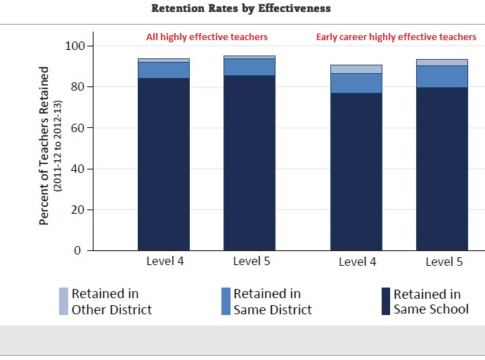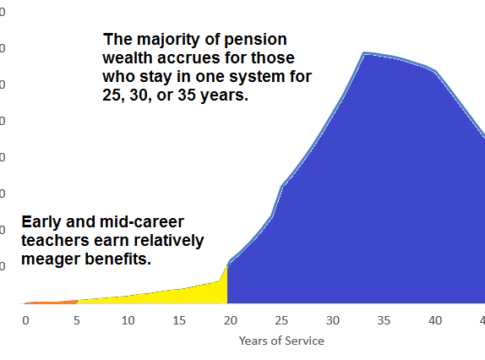Federal data from the National Center on Education Statistics (NCES) offers a potentially surprising revelation: Private school teachers have higher turnover rates than their public school counterparts, and it’s not particularly close.
The data below capture what NCES calls the “leaver” rate. NCES regularly surveys teachers, and it divides respondents into three categories: stayers, movers, and leavers. Stayers are teachers who were teaching in the same school in the current school year as in the base year. Movers are teachers who were still teaching in the current school year, but who had moved to a different school. And the leavers, represented in the graph, are teachers who left the profession entirely.
As the graph shows, the teacher leaver rate is almost twice as high at private schools than it is at public schools. Both have increased over time, but private schools have seen their rates increase even faster. These data call into question many of the common explanations for changes to teacher turnover rates among public school teachers, such as No Child Left Behind, teacher evaluation reforms, or the Common Core. Those reforms, which applied primarily to public schools, simply can’t explain the increases in teacher turnover in private schools. (In fact, during the NCLB era, public school teacher turnover did rise a bit, but private school turnover rose even more.)
The next graph shows how the “leaver” rates have changed over time for public and private school teachers, by their years of experience. Over time, private schools have seen dramatic increases in turnover among early-career teachers, whereas in the public sector, early-career teachers are more likely to stay today than they were in the late 1980s. In fact, private school leaver rates have accelerated faster than public school rates for every age group except those with 20 or more years of experience. (As my colleague Chad Aldeman has written, those late-career turnover increases can be traced at least partially to changing demographics and rising retirement rates.)
Source: NCES
Another way to look at this data is to attempt to follow synthetic “cohorts” of teachers over time. We’ve run this same analysis on public school teachers and found that cumulative retention rates for public school teachers haven’t changed that much over time. Regardless of the year they started, about one-third of public school teachers had left within five years, and about half were gone within 10 years.
But compare that finding to private school teachers, where we see a noticable difference across cohorts. Rather than the lines overlapping, signaling similar turnover rates, we see clear gaps across entry years. In the private sector, unlike in public schools, teachers who entered in 1987 had higher retention rates than teachers who were hired in 1990, and so on. Those gaps are smaller in more recent years, but the NCES data suggest that far fewer private school teachers today are making it to key career milestones than did in the past.
Since the cohort graph is somewhat hard to read, see the same data in the table below. Each column represents a starting year, and the rows indicate the cumulative retention rate by years of experience. Private school teachers who leave within three years of experience provide an especially compelling example. Among new private school teachers in 1987, a little over one-quarter had left within three years. In 2008, more than half were gone within the same time frame. Again, these are much higher figures than for public school teachers.
Since this was written for a pension blog, it’s worth mentioning that we do NOT think pensions are the cause of, or solution to, this issue. First, while public sector teachers are more likely to be enrolled in defined benefit pension plans, that disparity existed in the 1980s as well. That is, it can’t explain the changes over time, nor can it explain the changes by age group. Second, while pensions could theoretically boost teacher retention, in practice we don’t actually see much evidence of that. We don’t have plausible theories for why turnover in private schools seems to be rising much faster than it is in public schools–although we’d love to hear suggestions—but as the country considers making additional public investments in private schools, it’s worth wondering why these schools are losing so many of their teachers.
— Kirsten Schmitz
Kirsten Schmitz is an Analyst with Bellwether Education Partners.
This post originally appeared on TeacherPensions.org.









